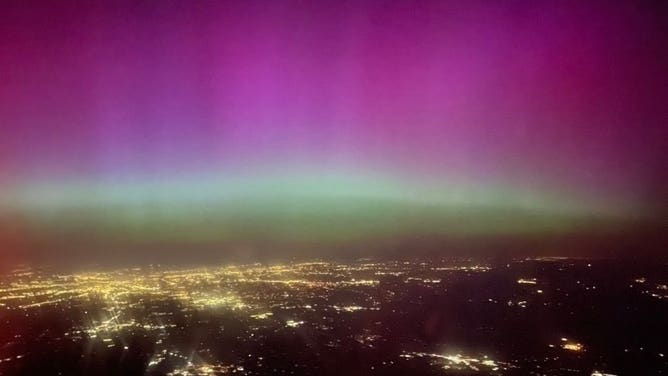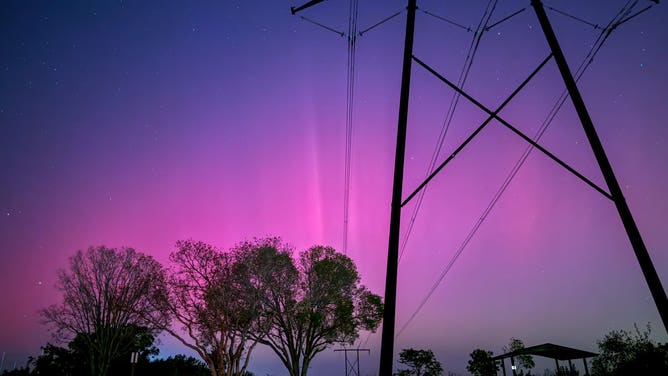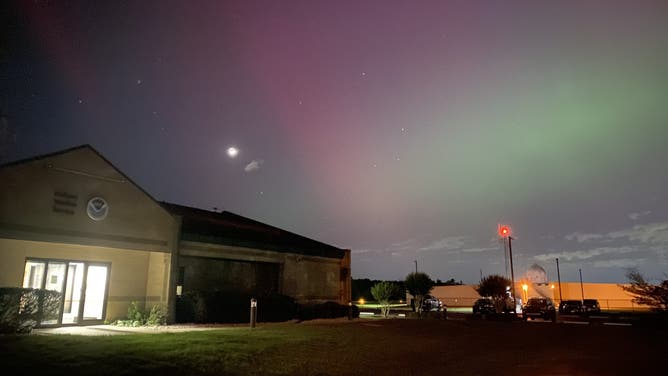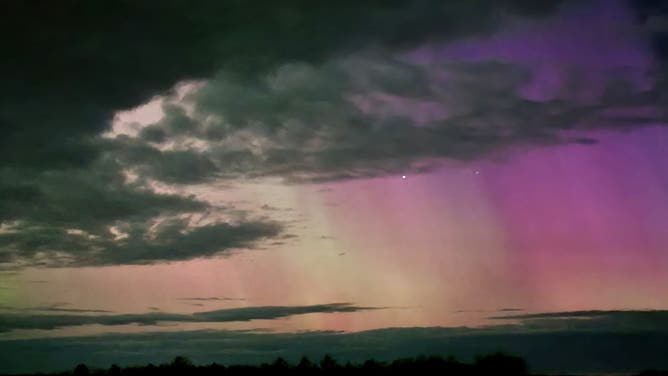‘Extreme’ geomagnetic storms return Saturday promising encore of nationwide aurora
A historic geomagnetic storm that brought a spectacular display of the Northern Lights as far south as Florida Friday night shows no signs of slowing down with more aurora likely Saturday.
Solar storm allowing wildspread aurora viewing
A historic geomagnetic storm that brought a spectacular display of the Northern Lights as far south as Florida and Texas on Friday night shows no signs of slowing down.
A historic geomagnetic storm that brought a spectacular display of the Northern Lights as far south as Florida and Texas on Friday night shows no signs of slowing down.
As a massive sunspot the width of 17 Earths continues to spew solar flares, geomagnetic storm activity reached Level 5 "extreme" conditions Friday evening. After a brief return to level 3 and 4 conditions at times overnight, solar activity reenergized Saturday morning and storms have returned to those extreme Level 5 conditions, according to NOAA’s Space Weather Prediction Center.
Space weather forecasters now believe geomagnetic storms of varying intensity will persist through at least Sunday.
"The threat of additional strong flares and (Coronal Mass Ejections) will remain until the large and magnetically complex sunspot cluster (NOAA region 3664) rotates out of view over the next several days," the SWPC wrote in a Saturday morning update.
While that bodes well for a second round of nationwide aurora viewing Saturday night, it continues to strain electrical and satellite infrastructure. SWPC reports there have been reports of power grid irregularities and degradations to high frequency communications and GPS.
SpaceX's Starlink service warned on its website Saturday morning that it was experiencing "degraded service," though it didn't give further details. Yet SpaceX head Elon Musk had earlier posted on X that the Starlink satellites were under a lot of pressure due to the geomagnetic storm and were still holding up.
SWPC officials say those who manage vulnerable equipment have been briefed on the heightened solar activity.
"We have notified all of our infrastructure operators that we coordinate with, such as satellite operators, communication folks, and of course, the power grid here in North America (about the extreme solar event)," SWPC coordinator Shawn Dahl said Friday. "So they are able and prepared to take mitigation efforts as much as possible throughout this event if it should unfold to the levels that we currently are anticipating."
This Level 5 geomagnetic storm is the first to hit Earth since October 2003. That storm knocked out power in Sweden and damaged electrical transformers in South Africa.
Forecast again looks good for aurora hunting

Cloud Cover forecast for 1 a.m. CT on Sunday May 12, 2024.
(FOX Weather)
The weather forecast for Saturday night is similar to Friday night's forecast.
Skies will be mostly clear across the West and Pacific Northwest into most of the Plains and Great Lake. Parts of the Northeast and New England will have marginal conditions with clouds hanging around New York City.






















